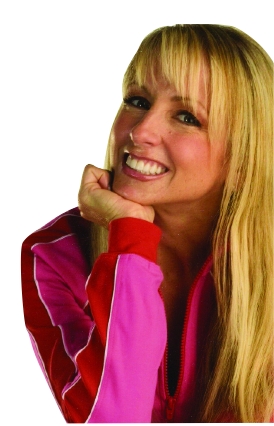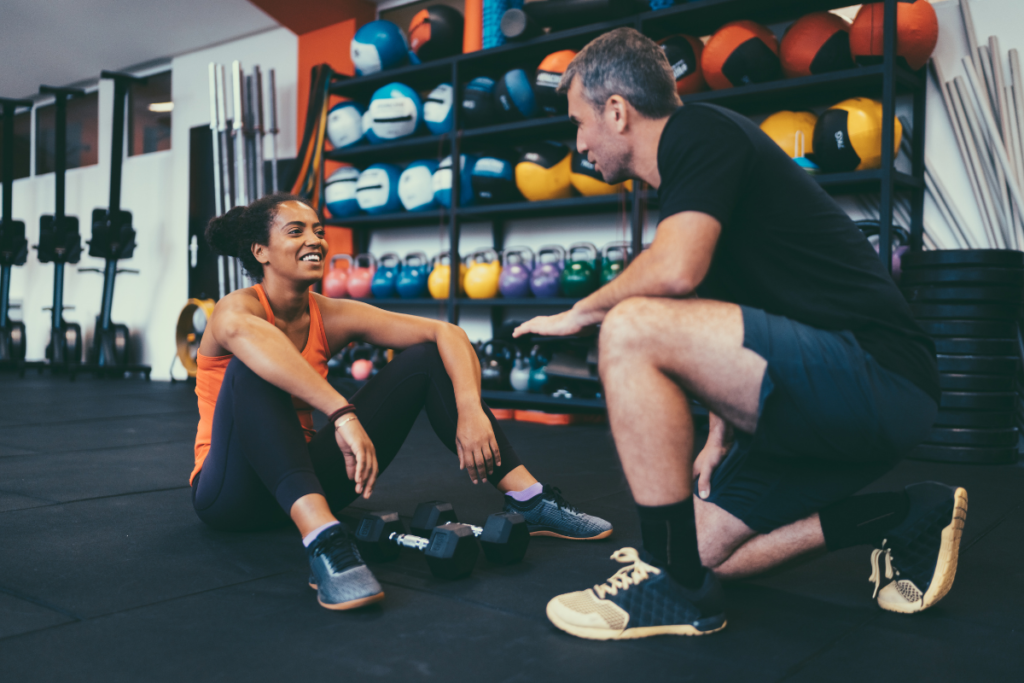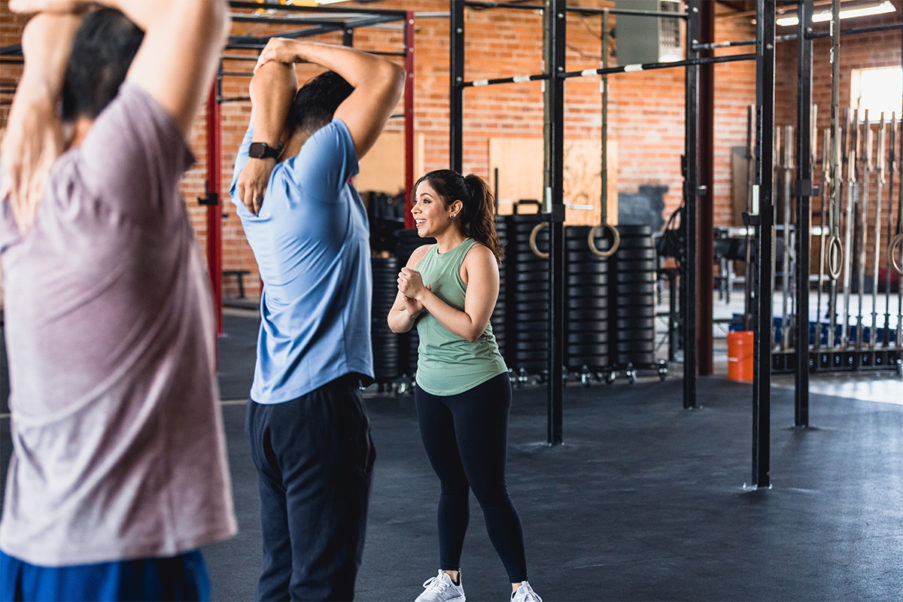A Fitness Evangelist
IDEA presenter Chalene Johnson talks about converting nonbelievers to health and wellness.

You can feel Chalene Johnson’s exuberant spirit in your bones before you even walk into one of her classes. She is the fitness industry’s honorary cheerleader and doesn’t let anyone leave until they’ve broken a smile and a sweat. Johnson is more than a creative choreographer; she is also a successful entrepreneur who has introduced numerous popular formats, including Turbo Kick™ and PiYo™. Her boundless energy and authentic approach to helping people motivate others to “pay it forward.”
new trends in music? If so, what are they, and how are instructors adapting?
I’ve noticed a lot more rap and R&B hitting the top of the charts. These songs are great to listen to in your car, but the challenge is to incorporate this music in a way that doesn’t offend participants because of rough lyrics or blatant sexual and drug references. My company screens the songs as best we can. We re-record some lyrics and strive for a nice mix of new school with old school.
I’ve found that it varies from club to club and region to region. One pressing issue seems to be the struggle group fitness instructors have affording the many trainings and certifications they need to stay current. This comes at a time when many clubs are faced with decreasing memberships and increasing overhead. Many facilities have placed a ban on pay increases or have had to make substantial schedule cutbacks.
Globally, I think all instructors are challenged by the need to provide newcomers with a successful and nonintimidating experience, while meeting the expectations of longtime regulars who constantly look for a more challenging experience.
motivates you?
I’m very inspired by the person who sneaks into the back of the class and hopes not to be noticed. I have so much respect and admiration for the new exerciser who musters up the courage to join a room of fit-bodied people who all seem to know each other and the routine. That person makes me a better instructor. I’m reminded to cue earlier, offer modifications, be encouraging and help each new participant enjoy the experience.
I’m motivated by those who have not yet discovered how much fun exercise can be. I’m inspired by those who are on the edge, looking in. They’ve taken a class or two in the last week but still villanize exercise. I look for those people so I can scoop them up! I know that if I can get to them and make a connection, I can open up a whole new world to them. I consider myself a kind of fitness evangelist. I am obsessed with making new converts.
“innovation” muscles strong?
Currently, my favorite source of innovation is YouTube.com. Of course it’s great to know what’s happening in fitness by taking other instructors’ classes, attending conventions and renting videos; but one of the best ways to see what’s happening on the fringes is to spend some time surfing sites like YouTube. One day I spent almost 5 hours watching hundreds of clips of high-school and college step-and-stomp teams. I was mesmerized. Step and stomp is hot, young, different and so fun to master. The moves inspired a great deal of my most recent Turbo routine. I find inspiration by looking outside traditional fitness venues and observing other forms of movement.
group fitness instructors
do to help reach them?
Where do I begin? There are so many groups that are underserved, but the most important and perhaps the most urgently in need of our help is our children. For 5 years, I have been serving as a volunteer physical education teacher for the public school system in our area. I can tell you from firsthand knowledge that we are raising a generation of obese and inactive children. We know they need our help, but we have to start with the parents. It’s the moms and dads who dictate the activity level, shop for food and pass along their views on health and fitness. If volunteering in the schools is not an option, we all have the power to educate and influence the parents in our classes every day. It starts with them.
activities help your fitness career the most?
Being part of Toastmasters, taking “voice-over” lessons and hiring a coach to critique and improve my presentation skills are all things that have helped me to be a better instructor and to be more relaxed and more myself when I’m on camera.
Being a lifelong student has helped my fitness career. I love to spend free time reading or listening to self-improvement books on CD. Every topic can relate to your chosen career path: communication, understanding personalities, sales techniques, organization, branding and Web design. I’ve been able to apply the knowledge of experts to help my career: after listening to keynote speaker Cheryl Richardson at the 2006 IDEA World Fitness Convention®, I decided to become a certified life coach and am currently pursuing my credential.
I always fall in love with participants or clients who open up and share something intimate and personal with me about their challenges. Currently, I have a student who shared her struggle with depression and a variety of eating disorders. She recently told me that after a month of taking classes, for the first time in her life she was actually able to feel joy. That’s inspiring.
for new instructors and the “next” generation?
Regularly ask to be evaluated. Without a doubt, evaluations were the most painful, uncomfortable and beneficial experiences I ever had as a new instructor. It may simply be my area or the clubs where I teach, but evaluations are no longer commonplace. Ask a veteran instructor or your group fitness manager to evaluate you. Ask for just one or two things that will make the biggest difference in your teaching skills, and the evaluation will be less overwhelming.
I don’t. Unfortunately, as much as I would love to give some good advice here, I can’t. I seem to go from one minor injury to another, and I attribute that to a die-hard approach to fitness and the sports I love! I do, however, try to avoid overuse injuries by keeping variety in my teaching schedule and in my own workouts. I also try to give myself a few days of true rest when my body tells me I’m in need. I recover quickly from minor tweaks and muscle imbalances by making sure my diet is well-balanced and by scheduling regular deep-tissue massages.
Take a whole-person approach to each class. Remember that exercise can be a life-changing experience for people. Instructors should spend as much time planning how they will motivate, entertain and inspire their students to be their best as they do planning choreography and music. Lift people’s spirits, and in the process fitness will become something they’ll love!




